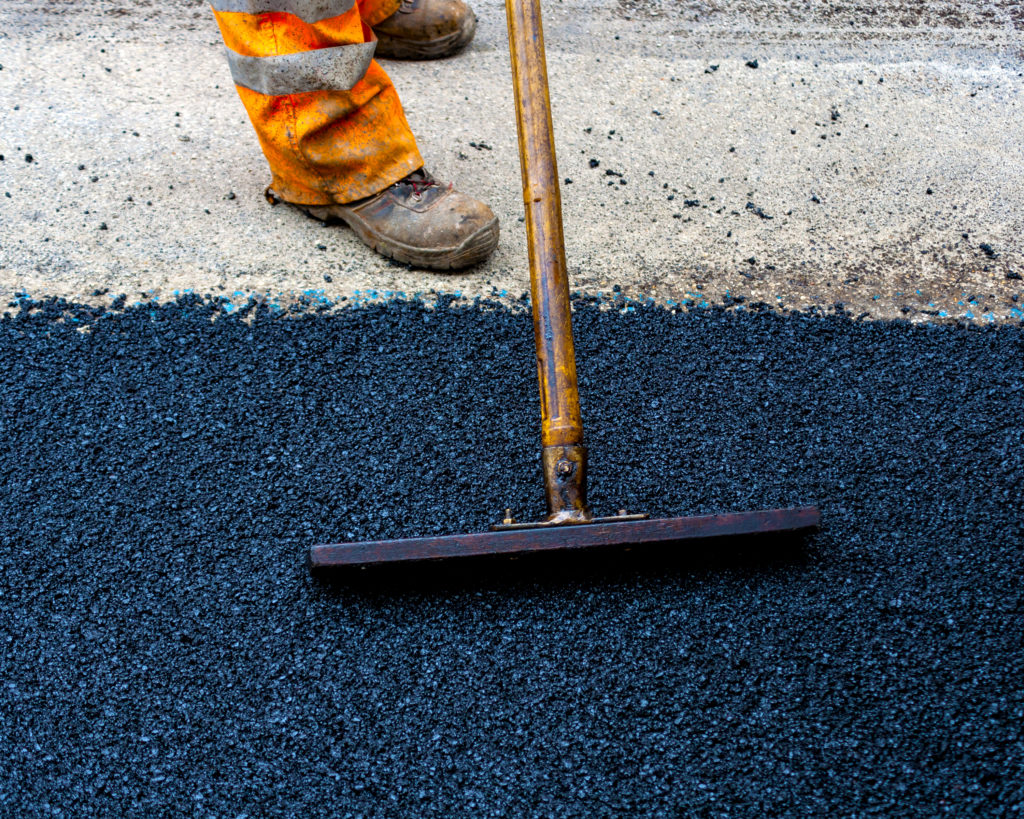Hot Mix Asphalt Paving: Your Entrance to Costs Angled Parking Solutions
Hot Mix Asphalt Paving: Your Entrance to Costs Angled Parking Solutions
Blog Article
Opening the Keys of Warm Mix Asphalt Technology
Discovering the midsts of warm mix asphalt modern technology uncovers a globe where specific formulations and thorough procedures converge to shape our roadways and framework. The fusion of binders, fillers, and accumulations isn't merely a construction task however a tactical orchestration of resilience and efficiency. As we peer into the elaborate dancing of elements, a tapestry of strength and sustainability unfolds. What lies underneath this surface area of asphaltic proficiency, and what keys wait to be unveiled in the realm of leading advancements?
Importance of Warm Mix Asphalt
Hot Mix Asphalt plays a vital function in modern facilities development due to its toughness and cost-effectiveness. As the most frequently utilized paving product for roadways, freeways, and car park great deals, Warm Mix Asphalt provides a variety of advantages that add to its importance in building and construction projects.
The longevity of Warm Mix Asphalt stems from its make-up, which consists of aggregates, binder, and filler products that are meticulously selected and blended to satisfy specific performance needs. In general, the significance of Warm Mix Asphalt in infrastructure advancement can not be understated, as it proceeds to be a foundation of modern construction practices.
Components of Asphalt Mixes
The structure of asphalt mixes includes thoroughly chosen aggregates, binder, and filler materials that are essential for achieving specific efficiency needs. Accumulations are the main part of asphalt mixes, giving toughness and stability. These aggregates can be natural, such as crushed rock or smashed stone, or synthetic, like recycled materials from old pavements. The binder, commonly asphalt or asphalt cement, holds the aggregates with each other and supplies versatility and resilience to the mix. The choice of the binder is critical as it directly affects the mix's performance in various weather. Fillers, such as moisturized lime or Portland concrete, are utilized to improve the mix's workability and aging resistance. Angled Parking.
The combination and proportion of these elements play a considerable function in figuring out the top quality and performance of the asphalt mix. Engineers thoroughly design the mix to fulfill certain requirements, thinking about aspects like website traffic quantity, environment problems, and sidewalk life-span. Appropriate selection and balancing of aggregates, binder, and fillers are necessary for producing long lasting, lasting asphalt pavements.
Combining and Production Strategies

As soon as the aggregates are selected, the binder, commonly asphalt cement, is included to bind the products with each other. The binder's quality and quantity dramatically impact the mix's versatility, toughness, and resistance to environmental elements. Furthermore, fillers like moisturized lime or Portland concrete may be incorporated to enhance particular features of the asphalt mix, such as its workability or wetness resistance.
During this post production, the aggregates and binder are heated up, commonly in between 250-325 ° F(121-163 ° C ), to facilitate mixing and make certain correct finish of the accumulations. The mixing process should be detailed to achieve an uniform combination that promotes the wanted efficiency attributes of the asphalt. Various techniques, such as batch blending or drum blending, are used to achieve premium and consistent asphalt blends for building and construction projects.
Factors Impacting Asphalt Efficiency
Aspects affecting asphalt performance include an array of variables that affect Going Here the resilience, longevity, and general top quality of asphalt pavements. One vital factor is the quality of products used in the asphalt mix. The type and resource of accumulations, the binder high quality, and the additives all play a substantial duty in determining the performance of the asphalt sidewalk. The gradation of aggregates is important as it impacts the mix's workability, resistance, and security to breaking and rutting.

Design considerations, such as pavement thickness and drainage, are important in guaranteeing the lasting performance of the asphalt pavement. By very carefully considering these designers, aspects and professionals can maximize asphalt efficiency and improve the service life of sidewalks.
Sustainable Practices in Asphalt Innovation

WMA enables for the production and placement of asphalt mixes at reduced temperature levels compared to standard hot-mix asphalt, resulting in lowered energy intake and greenhouse gas discharges. The use of porous asphalt blends can assist minimize stormwater drainage issues by permitting water to penetrate with the sidewalk and into the ground, promoting natural water purification and charge processes.
Verdict
Finally, hot mix asphalt modern technology plays an important function in modern-day framework advancement as a result of its durability and cost-effectiveness. By carefully balancing components, employing proper blending strategies, and thinking about numerous elements, engineers can create high-quality asphalt blends that stand up to hefty a fantastic read traffic tons and rough climate condition. Welcoming lasting techniques, such as making use of warm-mix technologies and recycled materials, further boosts the environmental kindness of asphalt technology.
Mixing and manufacturing techniques in hot mix asphalt innovation include the exact mix and processing of accumulations, binder, and fillers to create a high-performance and durable asphalt mix.Factors affecting asphalt efficiency include an array of variables that influence the toughness, durability, and overall top quality of asphalt pavements. Lasting methods in asphalt technology incorporate different initiatives intended at lowering the environmental effect of asphalt production and paving procedures. By integrating redeemed asphalt sidewalk (RAP) and recycled asphalt shingles (RAS) right into new asphalt blends, the sector can considerably reduce the intake of raw materials and power, while also lowering landfill waste.
WMA permits for the manufacturing and placement of asphalt blends at reduced temperatures compared to typical hot-mix asphalt, resulting in minimized power consumption and greenhouse gas discharges.
Report this page